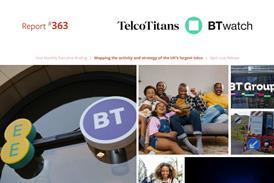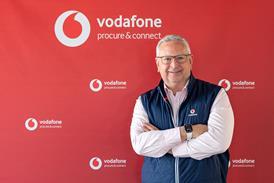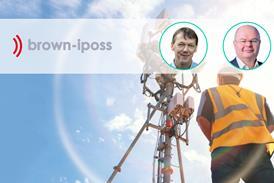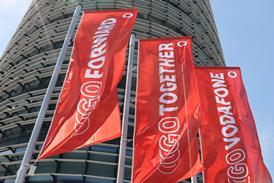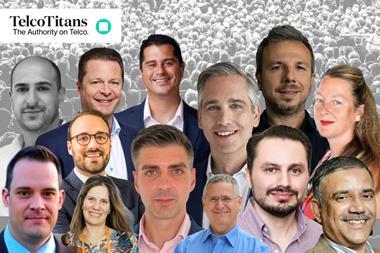- Operators have the magnitude and quality of data to unlock the operational gains, collaborative benefits and monetisation opportunities presented by digitalisation, including AI. They also have the experience, reach and relationships to power this data-led transformation.
- While underlying strengths underpin emerging telco data opportunities, Vodafone Business UK innovation chief Emma Keedwell stresses the need to rethink business models and up the focus on the end-user.
- AT&T data lead Matt Dugan underlines the need for a new outlook on data management that embraces flexibility, while protecting trust and security.
- Breaking out of silos and creating a more flexible data environment will also be key, with embrace of generative AI helping make this possible.
- In a more open environment, with ‘connecting everything’ a fundamental priority, collaboration across the entire ecosystem will spark a cycle of new data-driven commercial and operational opportunities.

‘Telcos can thrive in the emerging data era through a combination of network transformation and close collaboration’ was the message that emerged from discussions at Mobile World Congress on the role of operators in the new data economy.
In a series of MWC conference sessions involving data cloud pioneer Snowflake, representatives from operators and other industry players — including AT&T, Vodafone, and Amdocs — considered ways that data held and controlled by operators can translate into operational and business wins. This included new ways to support customers, generate operational savings, and drive growth.
This is in the context of a sector being primed to leverage the still largely untapped potential of uniquely vast, varied, and valuable data sources to make operations more efficient and sustainable, build on the embrace of partnership and collaboration, and continue the evolution of 5G and other new services to create platforms for monetisation.

It is not just operators being impacted by the rapid evolution of the data age, however, with broader transformation wryly highlighted by Philip Kippen, Head of Industry for Telecoms at Snowflake. “Why”, he asked as he introduced a discussion on autonomous networks with the theme of ubiquitous connectivity at its core, “is Snowflake leading a discussion around connecting everything?”.
Proliferation of data from ubiquitous connectivity is the clue, along with the need to create an environment linking this data, which is driving digital transformation and creating opportunities across all sides of the data equation.
“ As we start to shift into breaking down the silos into data collaboration, and then into AI, you can start to see how this chain of events is highly dependent on actually connecting everything. ”
Kippen.
For operators, the first step to leveraging this new data environment is to be sure to play to connectivity and network strengths.
Years of operator investment in building trust pays off when leveraging data

Emma Keedwell, Head of Innovation at Vodafone Business UK, frames network data as a “foundation of truth” that can be applied in a wide range of situations.
This foundation, she says, underpins the value chain for building innovative data services in markets including finance, insurance, and navigation, and is set to remain critical as use cases evolve, providing further openings for operators to expand their offerings. “We understand accurate data”, Keedwell says, “if it happened on our network: it happened”.
At least partly as a result of this network strength, Keedwell suggests that “telecoms are in a really good spot” when it comes to the data monetisation opportunity, although she appreciates that operators “are not really known yet in that monetisable space”, presenting both a challenge and opportunity.
Past missteps in customer data handling, particularly linked to social networks, have raised some privacy and trust concerns among the public, but telcos have a trusted relationship with end‑users that can overcome this says Keedwell, citing a survey that put operators as second only to banks as the most trusted relationship people have with a major business.
While customers’ relationships with tech giants tend to be transactional, and personal data is effectively commoditised, operators take a longer term view, and can now build on the experience of managing a wealth of customer experience, relationship, and value data to explore new opportunities.

Matt Dugan, Vice‑President for Data Platforms at AT&T, emphasises that it is essential in building trust that there is transparency surrounding the use of data throughout the process of delivering services that use it. He warns that in many areas the data is “not always extremely clean”, which needs to be addressed. “Where those paths are not clean, then transparency is not really viable, and if the transparency is not viable then the use case is not viable”, he says.
For AT&T, the consequence of this philosophy of transparency is that data‑driven services are based on direct first‑party relationships with the customer, with opportunities provided for partners to deliver services building on those relationships.
Dugan cited the US connected car market, where AT&T provides connectivity and data‑enabled services that can be branded by the vehicle manufacturer, as an example of this opportunity in action.
Added value is an essential element of this approach, with Dugan stressing that AT&T does not monetise data through making it available for advertising or marketing channels, or by selling data insights.
While operators have the foundations with their data assets, and digitalisation is making building new data‑led services viable, the next step will be embracing a different mindset on how to leverage these new capabilities.
Keep it clean – data reliability is at the heart of digital services
As noted by AT&T’s Dugan, data hygiene is a critical element of building accurate and transparent services.
Data sources, particularly when combined, are nevertheless likely to involve imperfections, as recognised by Gadi Solotorevsky, Head of Data Engineering at Amdocs and an authority on AI and ML.

Solotorevsky estimates that as much as 80% of the work involved in current data projects can be taken up with data cleansing activities. A key way for telcos to tackle this drain on resources is by ensuring that, when prepared for use, data is held in a way that ensures availability for use in other projects without need to re‑do work.
“ If you can [manage] data needed across projects in one place that everybody can review, if somebody finds a problem, we can share it with everybody. It saves tons of work. So, one time you will have to invest 80% of the effort on cleansing, and it will be for one business case, for one model; but then the rest of the time you can reuse it. ”
Solotorevsky.
The significance of effective data cleansing goes beyond operational efficiency and directly to shaping the opportunity and value that can be unlocked by new business cases.
Good data hygiene is at the heart of meeting quality and governance requirements that come with service delivery. However, these expectations can prove challenging to meet when data needs to be managed across multiple sources and structures, unless there is an overarching platform ensuring that data is kept clean.
“Not too long ago, the approach was to have the data lake, or have the data warehouse, and put all your data there, and people will use it”, reflects Solotorevsky, “but it doesn’t work like that because accessing the data is really complex”.
Creating a landscape where levels of access can be flexible and targeted is vital, and Dugan anticipates it becoming increasingly possible for companies to stand up knowledge bases that can be interrogated through generative queries without the entire knowledge set being shared or potentially compromised.
“ You can share the ability to interrogate and instruct in a language-oriented way, but in a governed way — because you have the ability to create your chain of reasoning to say what kind of information or what kind of things we’re willing to share… It’s possible for a telco to get in and, as a TechCo, help you operationalise this data in a way that’s going to make sense to you. ”
Dugan.
A new telco data environment needs a new mindset…
Traditional telco approaches to data “don’t make as much sense if you’re dealing in a data cloud construct”, says Dugan.
“The future of data is not really ‘data as a data factory’ that we could use to make more tables, more columns, more stuff”, he says. Dugan instead frames the emerging environment as one demanding a software‑centric approach that can bring in principles such as continuous integration and continuous deployment (CI/CD) and DevOps.
AT&T is already adopting a capability‑oriented model with a focus on outcomes and services, with software teams embedded to enable and enhance the desired outcome. “The responsibility is to deliver, based on the expectation that the capabilities are meant to work together”, he says.
For Snowflake’s Kippen, the new data environment will be anchored on greater efforts to break down silos not just within organisations, but across the entire industry. This, he considers, will open up collaboration opportunities, in turn creating further potential for linkages to be made, leading to even greater data flow and utilisation.
Pointing to the growing proliferation of connected things, Kippen notes that this is an area where the impact of collapsing barriers will be truly beneficial. “The goal now moving forward is how do we reach beyond just ‘connecting things’, towards ‘connecting things across silos’, breaking down those barriers and bringing data, ultimately, across organisations and business functions so that businesses can use it”, he says.
… and a new data outlook requires effective user cases
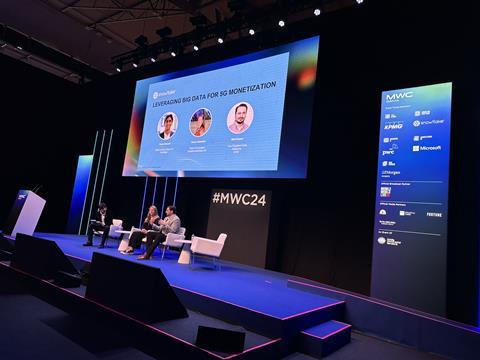
Vodafone’s Keedwell highlights an area where she considers telcos can learn from established TechCos when considering data‑driven services: thinking more about the user when creating business propositions.
“[TechCos] focus on users, usability, use cases and usage” she says, urging a move away from the traditional telco focus on B2B2C. This is outdated in the data ecosystem, she considers, with more attention needed on “how people want to use technology for good”.
Citing the example of Vodafone’s support for coverage of the Coronation of the UK’s King Charles, which saw a 5G slice employed to enable a global broadcast, Keedwell says “we started with the end user in mind, we thought about the 400 million global people that wanted to watch, and we worked backwards [from there]”.
The rise of WhatsApp as an enterprise application also provides an example of how a technology can transcend business and consumer boundaries through the development of new use cases. “We need to understand data consumption, understand the use cases, and then work out our tech strategy underneath”, she says.
AT&T’s Dugan expresses similar views when considering how operators will be able to make the most of the Network‑as‑a‑Service opportunity. Unlocking the value of data “is not going to happen just because a telco puts open APIs out there”, he says, “it’s going to happen because there’s a use case and a consumer of that use case that wants to engage”.
A broader, more open, AI-enthused platform approach
Operator access to data is rich and varied, notes Keedwell, featuring insight on demographics, behavioural, temporal, spatial, location and usage aspects, as well as network optimisation.
However, as already noted, often this data is siloed and bringing it together is a challenge.
Open infrastructure with integrated data and network clouds can create local optimisation in the process through which data is acquired and shared. “This is fantastic and can speed everything up”, AT&T’s Dugan says. However, this is not an end phase, and the next step is to find use cases that make the most of this capability to capture, share and deploy data more effectively.
Operators, he says, will be able to run applications directly on the data inside their elastic infrastructure environments either at, or near, the point of collection, so that data is natively accessible — providing radical new use cases at the edge.
For Amdocs’ Solotorevsky, providing not only access to data, but to information that comes on top of that data, will be important for operators.
Opening up raw data and tables will only result in multiple queries creating differing views of customers when, for most uses, a single data abstraction could provide all necessary relevant information. “Exposing this makes life easier for everybody”, he says, “and, if you have a problem… you have hopefully a single point when you can correct it and everybody will benefit, instead of thousands of people trying to fix the same problem”.
AT&T has developed a “data product ecosystem”, according to Dugan, fostering a product‑driven mindset focused on intended customers and intended uses in an environment that is both analytics‑ and API‑friendly.
In this ecosystem, generative AI is said to have been transformational in enabling documenting of the data and metadata, and supporting observability on the data platform that enables the operator to explain the origins and flow of data, and the uses to which it has been applied.
“ Already this year [two months’ in], we’ve generated over 45 million detailed business descriptions on our data sets using generative AI with this intelligence we can bring to bear. ”
Dugan.
This insight has enabled greater efficiency, with AT&T now in the midst of a data rationalisation programme that has seen the number of data tables maintained shrink from more than 400,000 to around 75,000, with further rationalisation on the cards.
Snowflake’s Kippen sees applications of generative AI such as this as “completely changing” the telecom sector’s relationship with data. “It democratises data access and insights across the business, allowing employees who are not data scientists to interact with data in a more meaningful way”, he says.
However, this positive impact will only be felt if the ecosystem focuses on fostering connectivity and data collaboration. “Gen AI solutions are only as good as the data they stand on”, Kippen notes, adding that telcos are well‑placed to deliver this strong base. He also emphasises the support that Snowflake can deliver in achieving this mission.
Delivering the right telco data environment will be a team effort
Technology does not exist in a vacuum, and building the data economy will also depend on commercial, policy and regulatory factors. “Customers need to opt‑in, then buy‑in; regulators need to allow data use; and we need to try quickly, fail fast and keep moving”, says Vodafone’s Keedwell.
Creating services contracts in a new way will be an important part of this approach, according to AT&T’s Dugan. Effective rights management will be essential so operators “don’t handcuff ourselves”, and restrict potential data activities.
This transcends operator boundaries, too, with Dugan pinning rights management as a vital contributor to collaboration across operators, as well as with marquee clients that want to integrate enterprise services more deeply in the network.
“ The technology is there: we’re the ones that limit it by applying some legacy thinking constructs that don’t necessarily have to apply in an elastic scale provider contract. ”
Dugan.
Hyperscalers play their part, too. Making the most of edge computing is recognised as an area where CSPs can meet enterprise service needs, saving on network and storage costs, for example. “That’s a real opportunity for us to work with the hyperscalers”, says Keedwell, citing Vodafone’s recent Microsoft partnership as evidence — “we understand where our customers want to have application performance”.
Snowflake was also namechecked by the Vodafone innovation lead, who said she is seeking ways to “get a faster return on the value insight at the edge”.
Kippen highlighted the data cloud specialist’s credentials for delivering this rapid return for telcos: “we’ve got the data platform, we have a world class set of analytics tools as well, and we’re working really deep in AI to help change the game for service providers”.
This type of data ecosystem collaboration will be essential for success in Keedwell’s view, bringing together different types of data and expertise. “I genuinely think that this isn’t going to be a race that we win alone”, she concludes.
Topics
- 5G
- AI (artificial intelligence, machine learning)
- Amdocs
- AT&T
- Big data
- Cloud
- Collaboration
- Data science (analytics)
- Digital transformation
- Digitalisation
- Emma Keedwell
- Gadi Solotorevsky
- Industry Voice
- Matt Dugan
- Mobile World Congress (MWC)
- Phil Kippen
- Security
- Snowflake
- TelcoFutures
- United Kingdom (UK)
- Vendor Voice
- Vodafone Business
- Vodafone Group
- Vodafone UK





